您好,登錄后才能下訂單哦!
您好,登錄后才能下訂單哦!
這篇文章主要講解了“Java之SpringBoot怎么實現基本增刪改查”,文中的講解內容簡單清晰,易于學習與理解,下面請大家跟著小編的思路慢慢深入,一起來研究和學習“Java之SpringBoot怎么實現基本增刪改查”吧!
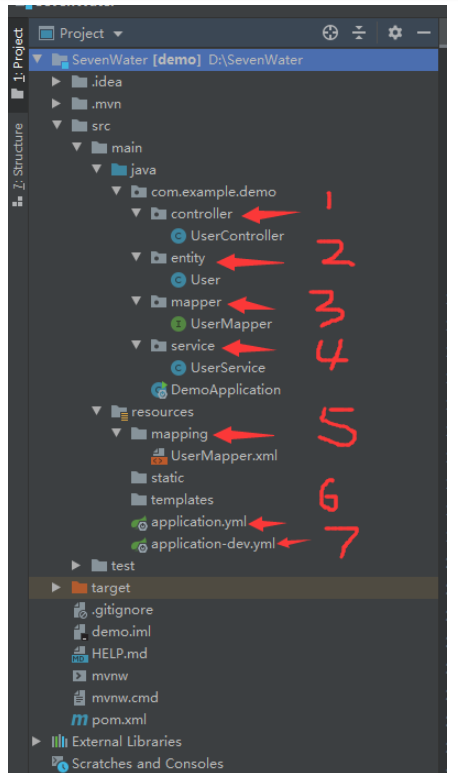
根據上圖所示,idea中我們有7個比較重要的模塊需要建立
(1)controller包:如果學習過或者對SpringMVC有所了解的小伙伴,肯定知道,controller是控制層,相當于我們的接收瀏覽器信息并響應發送相關信息的地方,具體的還結合計算機網絡相關知識,了解在瀏覽器中如何接收信息,并如何響應信息,在controller控制層下我們實現相關數據操縱(此處特別鳴謝我研究生生涯階段的師兄給我講解了很久關于Web編程方面的知識,收益良多。希望大家利用相關時間,多去查詢資料和相關視頻進行學習);
(2)entity包:這里存放我們的實體類,跟單純學java里面建立類一模一樣,沒有區別;
(3)mapper包:SpringMVC中稱之為持久層也就是(DAO層(數據訪問對象)),這里可以直接對數據庫進行操作,一般與第五個包mapping包連用;
(4)service包:SpringMVC中稱之為業務邏輯層,所以這里存放的類都是處理相關的業務邏輯;
(5)mapping包:放在resources下面作為classpath,存放的mybatis文件,因為現在的SpringBoot集成性很強,把很多配置文件都可以放在一塊,哪怕是沒有太多的mybatis基礎的小伙伴也可以進行學習。之所以說mapper包與mapping包是一起連用,是因為它們形成映射關系,它們兩的結合使用來訪問我們的數據庫文件;
(6)application.yml:作為全局默認配置文件,適用于整個項目,要整合我們這么多的配置信息,這個配置文件肯定少不了(此處最好是使用yaml語言編寫配置文件,因為編寫相對而言簡單明朗一些);
(7)application-dev.yml:這個算是具體某個環境的配置文件,具體要結合我們的實際項目。因為項目本身不只是開發環境,還有測試、生產等一系列環境。當我們做開發是用開發的環境配置application-dev.yml,當我們做測試的時候用測試的環境配置application-test.yml,當我們做生產的時候用的是生產的環境配置application-pro.yml。目前我們暫時只說開發環境,所以就只用到了一個配置文件application-dev.yml。具體的某個環境配置信息在使用時會覆蓋applicaiton.yml的默認配置,所以,不用擔心默認配置中的語句與環境配置中的語句發生沖突。
每個java程序都有程序入口,DemoApplication本身在我們初始化SpringBoot時就已經存在了,我們在這里不需要做過多的配置。
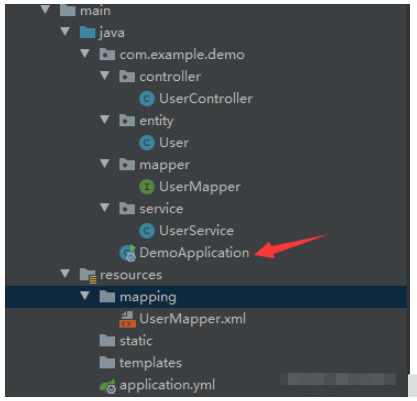
package com.example.demo;
import org.mybatis.spring.annotation.MapperScan;
import org.springframework.boot.SpringApplication;
import org.springframework.boot.autoconfigure.SpringBootApplication;
@MapperScan("com.example.demo.mapper")
@SpringBootApplication
public class DemoApplication {
public static void main(String[] args) {
SpringApplication.run(DemoApplication.class, args);
}
}●@SpringBootApplication注解:是用來表示這是一個springboot項目的啟動項類,目的是開啟自動配置(其實它是繼承于Configuration配置類,深解需要大家去剖析SpringBoot的原理)
●@MapperScan(“com.example.demo.mapper”)是為了掃描我們的mapper文件,進行有效訪問相關數據庫文件URL映射(這個注解的作用很大!)
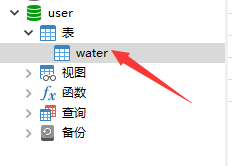
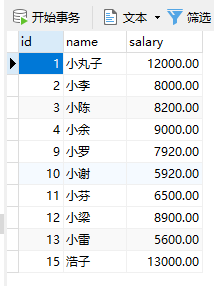
●相應的sql創建表語句如下所示:
CREATE TABLE `water` ( `id` int NOT NULL, `name` varchar(255) COLLATE utf8_unicode_ci NOT NULL, `salary` double(10,2) NOT NULL, PRIMARY KEY (`id`) ) ENGINE=InnoDB DEFAULT CHARSET=utf8mb3 COLLATE=utf8_unicode_ci;
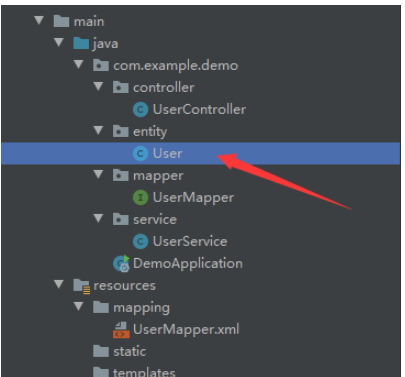
package com.example.demo.entity;
/**
* @description: 實體類
* @author: Fish_Vast
* @Date: 2021/8/25
* @version: 1.0
*/
public class User {
private String name;
private Integer id;
private Double salary;
public User() {
}
public String getName() {
return name;
}
public void setName(String name) {
this.name = name;
}
public Integer getId() {
return id;
}
public void setId(Integer id) {
this.id = id;
}
public Double getSalary() {
return salary;
}
public void setSalary(Double salary) {
this.salary = salary;
}
@Override
public String toString() {
return "User{" +
"name='" + name + '\'' +
", id=" + id +
", salary=" + salary +
'}';
}
}●這里想必大家不會陌生,這是純Java基礎都能編寫出來的類,建立三個私有屬性,一個空參構造器,相應的get、set方法,還重寫了一個toString()方法。這里值得注意的點是在聲明屬性時,最好是使用包裝類進行聲明。
●在Java中跟mybatis相關的讀取與錄入,為何盡量使用包裝類而不使用基本數據類型呢?
①在MySQL中沒有給字段賦值默認為null,當你從數據庫中查出來也是null,如果該字段在對應的Java代碼中是int類型,null不能對應int類型,因為int代表的是基本數據類型,只能是基本的數字。
②實體類的屬性可以給它賦值也可以不給它賦值,當你不給它賦值時,它擁有默認值,比如int的默認值就為0。但是主動為它設置值為0與它默認為0是兩個不同的概念。比如,一個班的成績:0代表某學生分數為0,而null代表這個學生該門考試沒有成績,這是兩個不同的概念。
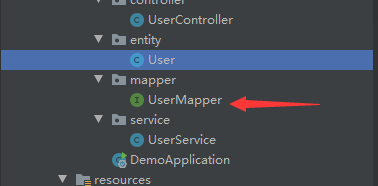
package com.example.demo.mapper;
import com.example.demo.entity.User;
import org.springframework.stereotype.Repository;
import java.util.List;
@Repository
public interface UserMapper {
//1.通過id查詢用戶信息
User getUser(int id);
//2.通過id刪除用戶信息
int delete(int id);
//3.更改用戶信息
int update(User user);
//4.插入用戶信息
int save(User user);
//5.查詢所有用戶信息
List<User> selectAll();
}●@Repository,注解它本身的作用便是標注數據訪問組件,作為DAO對象,它將 DAO 導入 IoC 容器,并使未經檢查的異常有資格轉換為 Spring DataAccessException。通過這個注解能夠報出更多發現不了的錯誤,更有利于對項目的維護和開發。其實@Repository不在接口上進行注明,我們的程序照樣可以運行,因為在我們使用@MapperScan的時候,我們已經將我們的接口交給框架中的代理類,所以即便是我們不寫,程序不會報錯,只是我們在Service層寫明接口的時候,IDEA會給出紅色的波浪線。可以這樣理解,標注@Repository是為了告訴編譯器我將接口注入到了IoC容器了,你不要報錯啦~
●相應地,寫出增刪查改和查詢全部信息的五個方法。
<?xml version="1.0" encoding="UTF-8"?>
<!DOCTYPE mapper PUBLIC "-//mybatis.org//DTD Mapper 3.0//EN" "http://mybatis.org/dtd/mybatis-3-mapper.dtd">
<mapper namespace="com.example.demo.mapper.UserMapper">
<resultMap id="BaseResultMap" type="com.example.demo.entity.User">
<result column="id" jdbcType="INTEGER" property="id" />
<result column="name" jdbcType="VARCHAR" property="name" />
<result column="salary" jdbcType="DOUBLE" property="salary" />
</resultMap>
<!--查詢用戶信息-->
<select id="getUser" resultType="com.example.demo.entity.User">
select * from water where id = #{id}
</select>
<!--刪除用戶信息-->
<delete id="delete" parameterType="int">
delete from water where id=#{id}
</delete>
<!--返回所有用戶信息-->
<select id="selectAll" resultType="com.example.demo.entity.User">
select * from water
</select>
<!--增加用戶信息-->
<insert id="save" parameterType="com.example.demo.entity.User" >
insert into water
<trim prefix="(" suffix=")" suffixOverrides="," >
<if test="id != null" >
id,
</if>
<if test="name != null" >
name,
</if>
<if test="salary != null" >
salary,
</if>
</trim>
<trim prefix="values (" suffix=")" suffixOverrides="," >
<if test="id != null" >
#{id,jdbcType=INTEGER},
</if>
<if test="name != null" >
#{name,jdbcType=VARCHAR},
</if>
<if test="salary != null" >
#{salary,jdbcType=DOUBLE},
</if>
</trim>
</insert>
<!--根據id更改用戶信息-->
<update id="update" parameterType="com.example.demo.entity.User">
update water
<set >
<if test="name != null" >
name = #{name,jdbcType=VARCHAR},
</if>
<if test="salary != null" >
salary = #{salary,jdbcType=DOUBLE},
</if>
</set>
where id = #{id,jdbcType=INTEGER}
</update>
</mapper>●mapper namespace用于綁定mapper接口的,當你的namespace綁定接口后,你可以不用寫接口實現類,mybatis會通過該綁定自動幫你找到對應要執行的SQL語句(通過mapper方法名進行綁定);
●resultMap 定義了一個id為BaseResultMap的標識,type代表使用哪種類作為我們所要映射的類;
●<select id="getUser" resultType="com.example.demo.entity.User">在這里中的id = “xxx” ,必須要和mapper接口方法名保持一致,如果不一致,程序會報相應的錯誤。
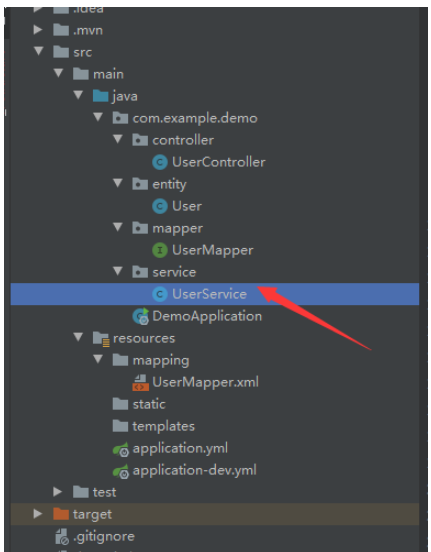
package com.example.demo.service;
import com.example.demo.entity.User;
import com.example.demo.mapper.UserMapper;
import org.springframework.beans.factory.annotation.Autowired;
import org.springframework.stereotype.Service;
import java.util.List;
/**
* @description: 實現類,對進行相關的業務邏輯
* @author: Fish_Vast
* @Date: 2021/8/25
* @version: 1.0
*/
@Service
public class UserService {
@Autowired
private UserMapper userMapper;
public User getUser(int id){
return userMapper.getUser(id);
}
public int delete(int id){
return userMapper.delete(id);
}
public int update(User user){
return userMapper.update(user);
}
public int save(User user){
return userMapper.save(user);
}
public List<User> selectAll(){
return userMapper.selectAll();
}
}●這里我特別說明一下,private UserMapper userMapper既可以當做是引用數據類型,也可以作為接口對象進行使用,這里我們當接口對象使用(初次接觸的時候肯定對這個會有些許疑問,很正常,因為我當時對于這個接口也糾結了很久哦);
●@Service表示我們在業務邏輯層進行操縱,屬于自動配置的環節;
●相應的五個方法,通過對象得到相應返回值給UserMapper接口。
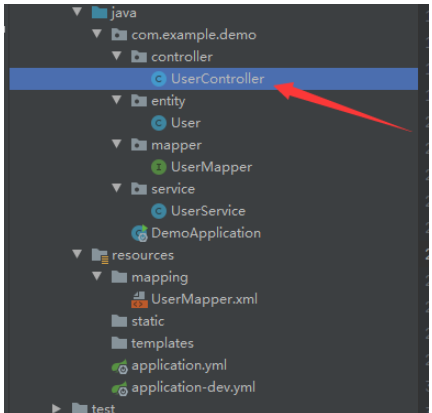
package com.example.demo.controller;
import com.example.demo.entity.User;
import com.example.demo.service.UserService;
import org.springframework.beans.factory.annotation.Autowired;
import org.springframework.web.bind.annotation.*;
import javax.xml.ws.Service;
import java.util.List;
/**
* @description: 控制器,接收并響應相關信息
* @author: Fish_Vast
* @Date: 2021/8/25
* @version: 1.0
*/
@RestController
@RequestMapping("/seven")
public class UserController {
@Autowired
private UserService userService;
//通過id得到用戶信息
@RequestMapping(value = "/getUser/{id}", method = RequestMethod.GET)
public String getUser(@PathVariable int id){
return userService.getUser(id).toString();
}
//通過id刪除用戶信息
@RequestMapping(value = "/delete", method = RequestMethod.GET)
public String delete(int id){
int result = userService.delete(id);
if(result >= 1){
return "刪除成功!";
}else{
return "刪除失敗!";
}
}
//更改用戶信息
@RequestMapping(value = "/update", method = RequestMethod.GET)
public String update(User user){
int result = userService.update(user);
if(result >= 1){
return "更新成功!";
}else{
return "更新失敗!";
}
}
//插入用戶信息
@RequestMapping(value = "/insert", method = RequestMethod.GET)
public int insert(User user){
return userService.save(user);
}
//查詢所有用戶的信息
@RequestMapping(value = "/selectAll")
@ResponseBody //理解為:單獨作為響應體,這里不調用實體類的toString方法
public List<User> listUser(){
return userService.selectAll();
}
}●@RestController注解:就表示我們在控制層模塊。控制層是作為SpringMVC最重要的一個環節,進行前端請求的處理,轉發,重定向,還包括調用Service方法;
●@RequestMapping注解:處理請求和控制器方法之間的映射關系;
●@ResponseBody注解:將返回的數據結構轉換為JSON格式響應到瀏覽器(這里說得比較籠統,只是簡單滴給大家說明一下,水平還不夠,認識還不深,不到之處還請見諒!);
●更多的注解解釋,還需要大家多去學習一下SpringMVC和SpringBoot,這里面會詳細地介紹,在這里我只是做了很粗略的說明而已(本人也是正接觸不久,正在努力學習當中)。
(8)配置application.yml文件
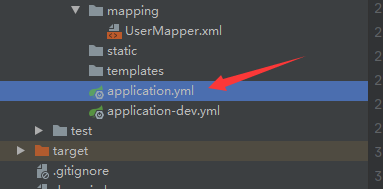
spring: profiles: active: dev
●語句很簡單,指明我們要使用的開發環境配置文件
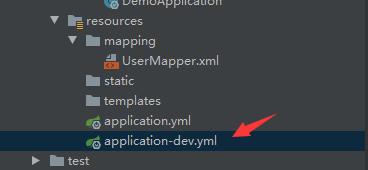
#服務器端口配置 server: port: 8081 #數據庫配置 spring: datasource: username: 數據庫名稱 password: 賬號密碼 url: jdbc:mysql://localhost:3306/user?useUnicode=true&characterEncoding=utf-8&nullCatalogMeansCurrent=true&useSSL=true&&serverTimezone=Asia/Shanghai driver-class-name: com.mysql.cj.jdbc.Driver #mybatis配置 mybatis: mapper-locations: classpath:mapping/*.xml type-aliases-package: com.example.demo.entity #showSQL logging: level: com.example.demo.entity: debug
●在開發配置文件當中,我們配置好我們的服務器端口號、數據庫的配置、mybatis的配置和如何展示我們的Sql;
●其中要注意的是,數據庫的配置中的username和password使用我們安裝MySQL數據庫時使用的賬號名稱和密碼,url中的3306/緊跟著我們的數據庫名稱,如果建立的數據庫名稱不一致,也需要進行修改。
通過以上9個步驟,我們從第(1)個步驟程序入口處點擊運行按鈕,在瀏覽器中輸入相應指令即可得到不同的展示信息:(到這一步,大概知道為啥要使用@MapperScan注解了吧,可以直接將掃描到的包文件交到代理類中,SpringBoot就是很人性化的框架!)
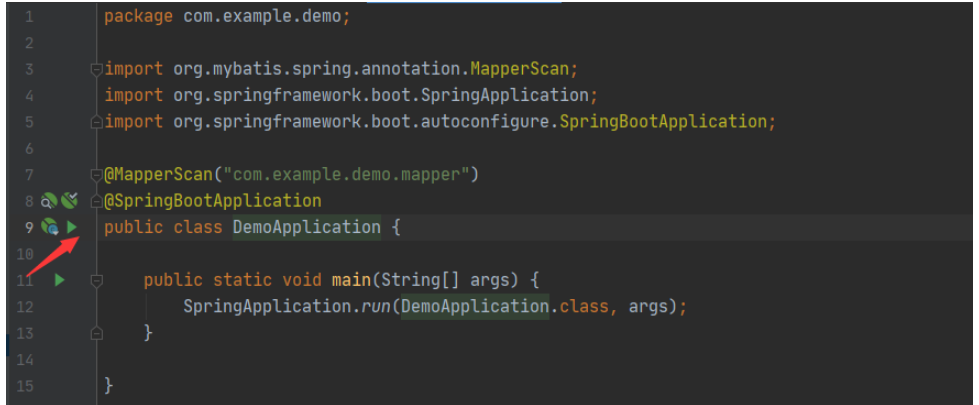
①查詢操作:http://localhost:8081/seven/getUser/1

②刪除操作:http://localhost:8081/seven/delete?id=14

③更改操作:http://localhost:8081/seven/update?id=1&name=小丸子&salary=12000

④插入操作:http://localhost:8081/seven/insert?id=15&name=浩子&salary=13000

⑤查詢全部用戶信息:http://localhost:8081/seven/selectAll

感謝各位的閱讀,以上就是“Java之SpringBoot怎么實現基本增刪改查”的內容了,經過本文的學習后,相信大家對Java之SpringBoot怎么實現基本增刪改查這一問題有了更深刻的體會,具體使用情況還需要大家實踐驗證。這里是億速云,小編將為大家推送更多相關知識點的文章,歡迎關注!
免責聲明:本站發布的內容(圖片、視頻和文字)以原創、轉載和分享為主,文章觀點不代表本網站立場,如果涉及侵權請聯系站長郵箱:is@yisu.com進行舉報,并提供相關證據,一經查實,將立刻刪除涉嫌侵權內容。